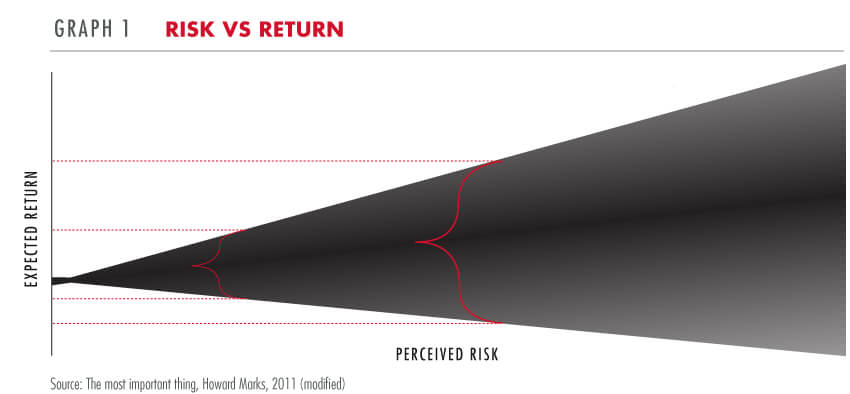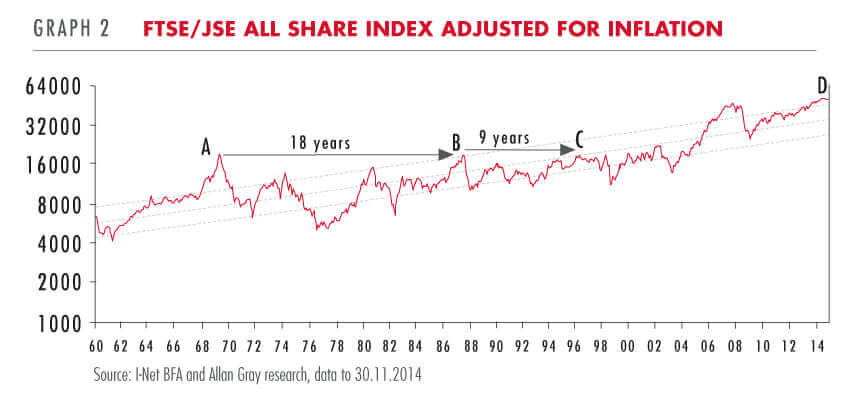Wanita Isaacs offers some insights into how you can think about risk in your investment process.
Efficient market theory holds that there is a direct relationship between risk and return: the higher the risk associated with an investment, the greater the return. This is intuitive: when we choose investments that we think are more risky, we naturally expect to be rewarded with higher returns.
Unfortunately, in the real world, this simplified relationship does not exist. We have imperfect information, so we are forced to deal with perceived risk and expected return. And at any level of perceived risk, there is a range of potential outcomes, as shown in Graph 1. By definition, this range widens as the risk increases, making it progressively more challenging to predict outcomes with any certainty. Your actual return could be far higher or far lower than your expectations. Even with perfect information and analysis, taking on greater risk does not guarantee greater future returns.

The price you pay
Your return is determined by the price you pay for an investment relative to its yield and relative to the price you sell it for. We believe the best definition of risk is the risk of permanently losing capital, normally as a result of overpaying. The price you pay is the most powerful determinant of both future risk and return and it is the one factor you can control at the outset.
Graph 2 uses the South African stock market as an example of an investment that carries a high level of perceived risk. It shows the fluctuation in the real (after inflation) price level of the market since 1960 (represented by the FTSE/JSE All Share Index, excluding dividends). The ALSI is within a single standard deviation of its trend, as described by the grey lines, roughly two-thirds of the time. The graph illustrates the uncertainty in the expected return from the stock market, and specifically the impact of overpaying. An investor who invested at the peak of the market in 1969 (point A on the graph) would have taken 18 years to get his initial invested capital back, and that is only if he sold his investment at exactly the right time (point B). If he had missed this exit point, he would have had to wait a further nine years to come out even (point C).

Point D shows where the market is today. While equities should always be considered long-term investments, the market is currently expensive compared to its history. As shown in the example, if you come in at a high point and the market returns to more normal levels, you may have to wait longer than expected before your investment recovers its value.
So what should you do?
The best solution for most investors is to choose a unit trust where the investment manager can invest in more than one kind of asset, such as a balanced fund. Managers can then avoid expensive assets in either local or offshore markets - and if everything is expensive, they can retreat to cash. This saves investors having to decide when is the best time to enter or exit the market.